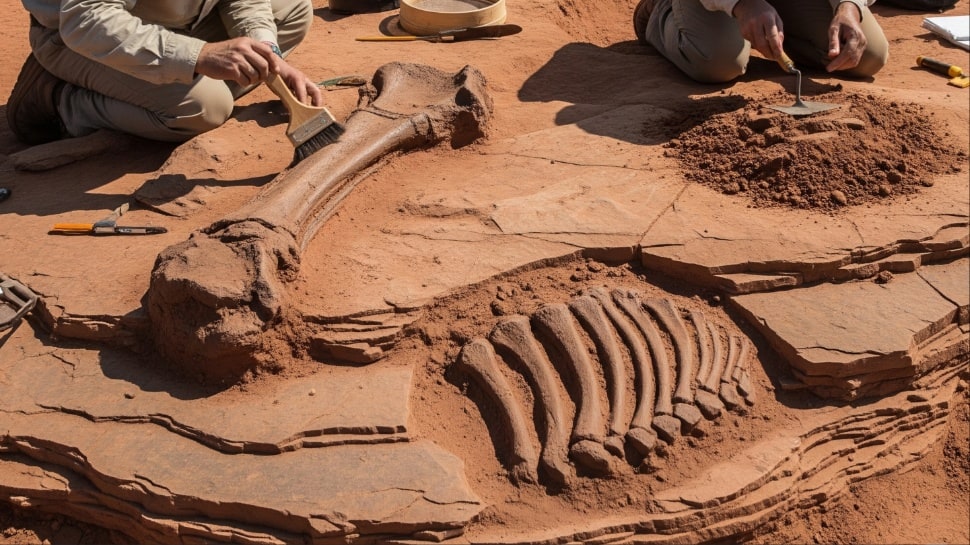New Delhi: Fossil-like formations believed to be from the dinosaur era have been discovered during pond excavation work near Megha village in the Fatehgarh sub-division of Rajasthan’s Jaisalmer district, prompting excitement among locals and geologists alike.
The unearthed objects include a large, bone-like structure and several pieces resembling petrified wood. While fossilised wood has been previously found in western Rajasthan, the discovery of skeletal-looking remains has sparked particular interest due to its rarity.
#WATCH | Jaisalmer, Rajasthan: Vertebrate fossils, potentially related to the Jurassic Era, found in Megha Village of Fatehgarh sub-division. pic.twitter.com/6KsZb9Q7NN
— ANI (@ANI) August 21, 2025
Add Zee News as a Preferred Source
Locals stumbled upon the remains while digging near a pond. In response, Fatehgarh’s Sub-Divisional Magistrate Bharatraj Gurjar and the local Tehsildar visited the site on Wednesday for an on-ground assessment.
Senior Hydro-Geologist Dr Narayan Das Inakhiya, who also examined the site, expressed enthusiasm over the find. “This is Megha Village… This is a vertebrate fossil… Most importantly, whole parts of the spine can be seen. It is a matter of curiosity, a subject for research, and a moment of pride for us,” he said.
#WATCH | Jaisalmer, Rajasthan: On vertebrate fossils potentially related to the Jurassic Era being found in Megha village, Senior Hydro-Geologist Dr. Narayan Das Inakhiya says, “…This is Megha Village..This is a vertebrate fossil…Most importantly, whole parts of the spine can… https://t.co/tKPxMW6jqU pic.twitter.com/EnXE6vezEQ
— ANI (@ANI) August 21, 2025
He further added, “This is proof that Jaisalmer’s geological heritage is incredibly rich. The fossil appears to date back to the Jurassic period and is estimated to be around 18 million years old. Villagers have collected many other similar fossils, and these are all interlinked, offering fresh hope for research.”
Dr Inakhiya described fossilisation as a slow, multi-million-year process and said the current discovery is “a significant achievement for the fields of Palaeontology, Geology, and for Jaisalmer itself.” Notably, he mentioned that the fossil seems to include wing-like structures, adding that “dinosaur footprints and bone remains have previously been found in this region.”
He also highlighted the tourism potential this discovery could bring: “Jaisalmer is already known for its forts and desert landscapes, but this development might make it a new attraction for science and history enthusiasts alike.”
Speaking to PTI, SDM Gurjar confirmed that higher authorities have been notified, and a team from the Geological Survey of India (GSI) is expected to conduct a scientific examination of the finds. “Only after a thorough investigation can we ascertain the age and classification of the fossils,” he said.
However, not all experts are convinced of the fossils’ antiquity just yet. According to media reports, Professor Shyam Sunder Meena observed that the remains were found on the surface rather than deep underground. “It is possible that they are not very ancient and may be only 50 to 100 years old. Only carbon dating and further scientific analysis can confirm their true age,” he said.
The region comprising Jaisalmer, Barmer, and neighbouring Kutch in Gujarat has long been recognised for its palaeontological significance. If authenticated, this latest find could further cement Rajasthan’s status as a key location for the study of prehistoric life in India.


